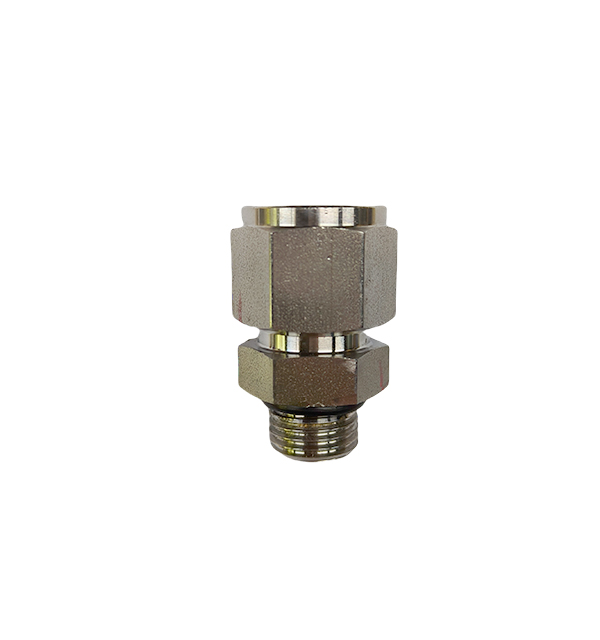How to select straight compression tube fittings suitable for hydrogen production units?
When selecting straight compression tube fittings suitable for hydrogen production units, multiple factors need to be considered. The specific selection key points are as follows:
Material
Considering the properties of hydrogen and the operating environment of hydrogen production units, the fitting body should typically be made of stainless steel materials, such as 304 stainless steel or 316 stainless steel. These materials have good corrosion resistance and hydrogen embrittlement resistance, which can ensure that no corrosion or embrittlement occurs during long-term exposure to hydrogen, thus guaranteeing the safety and reliability of the fittings.
The ferrule is generally made of the same stainless steel material as the fitting body to ensure compatibility and matching between the two. Meanwhile, the ferrule's hardness and toughness need to meet certain standards to ensure that it can effectively cut into the outer wall of the pipeline when the nut is tightened, forming a good seal.
The nut should also be made of stainless steel material matching the fitting body and ferrule, ensuring overall corrosion resistance and mechanical properties. This material consistency maintains the joint's structural integrity and compatibility, preventing galvanic corrosion or mechanical mismatch that could compromise sealing performance under hydrogen service conditions.
Dimensions
The dimensions of straight compression tube fittings should match the size of the connected pipeline. As pipeline dimensions in hydrogen production units vary widely, the appropriate fitting size must be selected based on the actual outer diameter of the pipeline. Common pipeline outer diameters include 6mm, 8mm, 10mm, 12mm, etc., and the fitting specifications should correspond to these dimensions to ensure the pipeline can be accurately inserted into the fitting and achieve a secure connection.
Meanwhile, the dimensions of the connecting ends of the fittings, such as the specifications of internal threads, should also be considered. If the fitting needs to be connected to other pipe fittings or equipment with external threads, the specifications of the internal threads must be consistent with those of the external threads of the counterpart. Common thread specifications include M10×1, M12×1.5, M14×1.5, etc., and the selection should be made according to the actual connection requirements.
Working Pressure
In hydrogen production units, pressures vary across different sections, and there are differences in the pressure ranges of each link from hydrogen production to storage and then to transportation. Therefore, straight compression tube fittings should be selected according to the specific installation location and working pressure.

Generally, the hydrogen pressure in hydrogen production units may range from several megapascals to tens of megapascals. The rated working pressure of the selected fittings should be higher than the operating pressure of the unit to ensure that the fittings can work safely and reliably without leakage or damage during normal operation and possible pressure fluctuations. For example, if the maximum working pressure of the unit is 10 MPa, a straight compression tube fitting with a rated working pressure of at least 15 MPa or higher should be selected.
Working Temperature
During the operation of a hydrogen production unit, heat is generated, leading to varying temperatures in different sections. For example, the temperature near the hydrogen generator may be relatively high, while that in the storage and transportation links is lower. Therefore, the selection of appropriate materials and models for the fittings should be based on the actual working temperature of their installation locations.
General stainless steel straight compression tube fittings can withstand a temperature range of approximately -20°C to 200°C. If there are areas with higher temperatures in the unit, it may be necessary to select special high-temperature resistant materials or specially treated fittings to ensure stable performance at high temperatures, preventing thermal expansion or material property changes from affecting the sealing effect and connection strength.
Sealing Performance
Due to the small size of hydrogen molecules, which makes them prone to leakage, the sealing performance of straight compression tube fittings is of vital importance. When selecting fittings, attention should be paid to their sealing structure and sealing materials. Compression tube fittings can achieve good sealing effects after tightening the nut through a reasonable ferrule design and high-precision processing technology.
Some straight compression tube fittings may incorporate special sealing materials or surface treatment technologies to further enhance sealing performance. For example, applying lubricating and sealing coatings such as polytetrafluoroethylene (PTFE) on the surface of the ferrule can be considered as a selection criterion. These enhancements improve resistance to hydrogen permeation and ensure long-term reliability under dynamic operating conditions.
